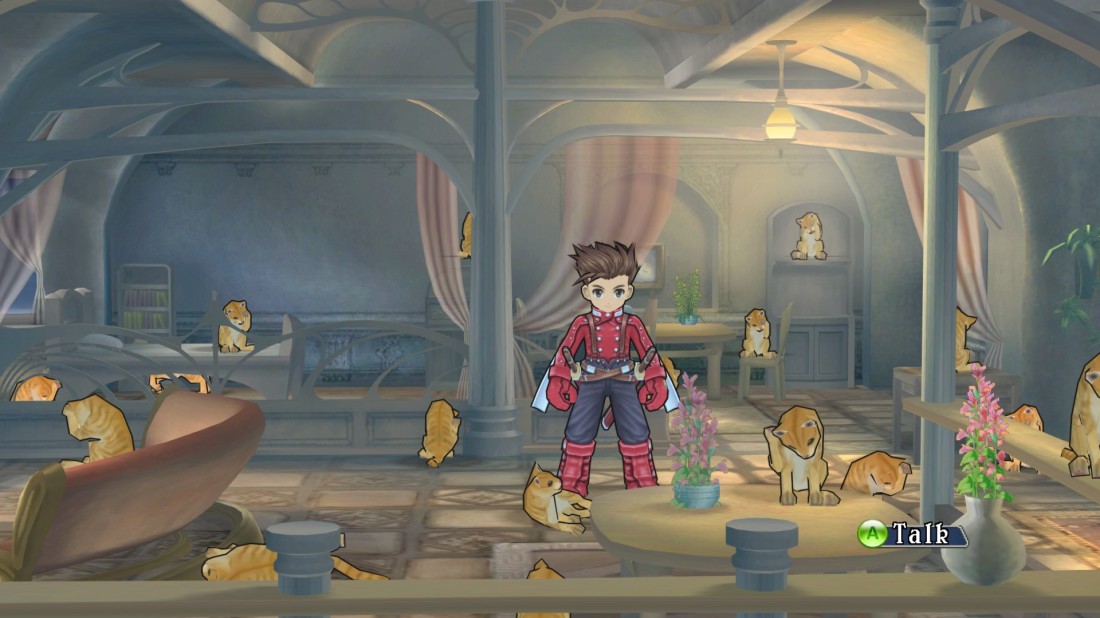*There are some spoilers below pertaining to the general story/structure of Tales of Symphonia and screenshots of the game, however I don’t go into any in-depth specifics and definitely don’t give away the ending!*
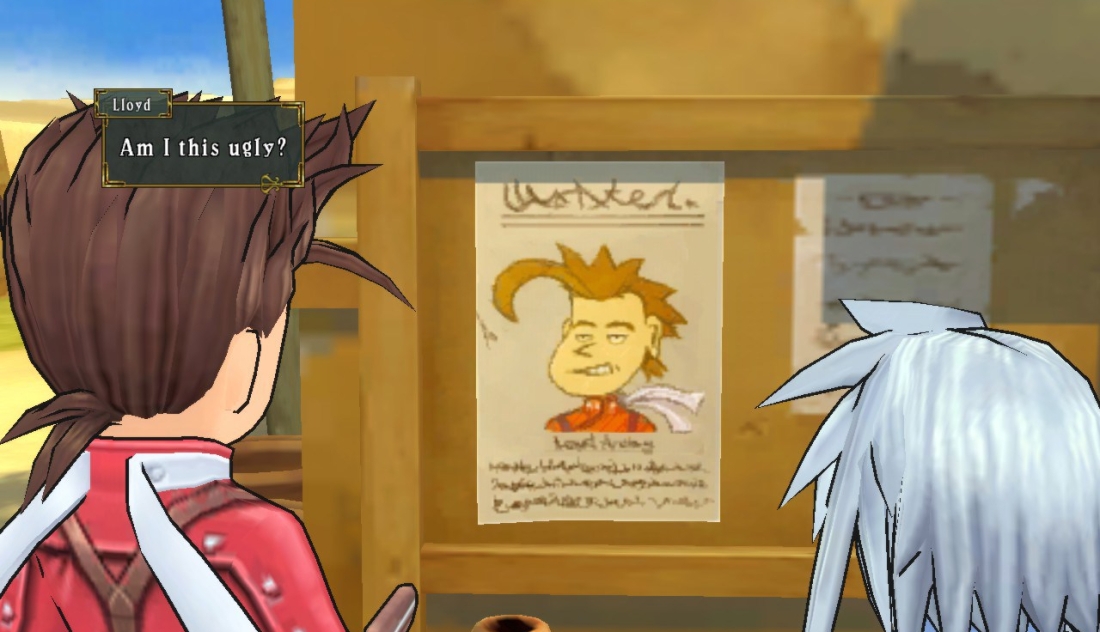
Ahh, Tales of Symphonia.
You eluded me for so long, being stuck on my list-of-game-series-I-knew-about-and-would-probably-like-but-never-got-into (I’m also looking at you, Persona). I played about half of Tales of Phantasia several years ago but never finished it and never revisited.
But then Christmas 2017 came…and I was gifted a copy of Tales of Symphonia on Steam. I could avoid it no more, clearly.
In fact, it wasn’t going to be on my gaming agenda for quite some time, but then along came a few days before the Shadow of the Colossus remake was released and I wanted to play something but didn’t feel like playing Monster Hunter. I know, I thought. I’ll have a little go at Symphonia. Just a little go. Then when SOTC is out I’ll play that. I probably won’t even get that into Symphonia.
Well, one thing led to another, and…let’s just say Shadow of the Colossus is on hold for now. Sorry, Wander.
Something which is making Tales of Symphonia stand out in particular from other games for me is the integration of these sort-of animé kind-of cutscenes within the gameplay.
Often you’ll be wandering around in the overworld (or dungeon, or town), and then an icon will flash up in the bottom left of the screen telling you to push a certain button, or there’ll be a funny flashy light thing you can walk into. Then you’ll be treated to a little animated conversation between your party members, which could last from a few seconds to a couple of minutes. They could discuss anything—from how bad one of your party smells, to food, to philosophy.
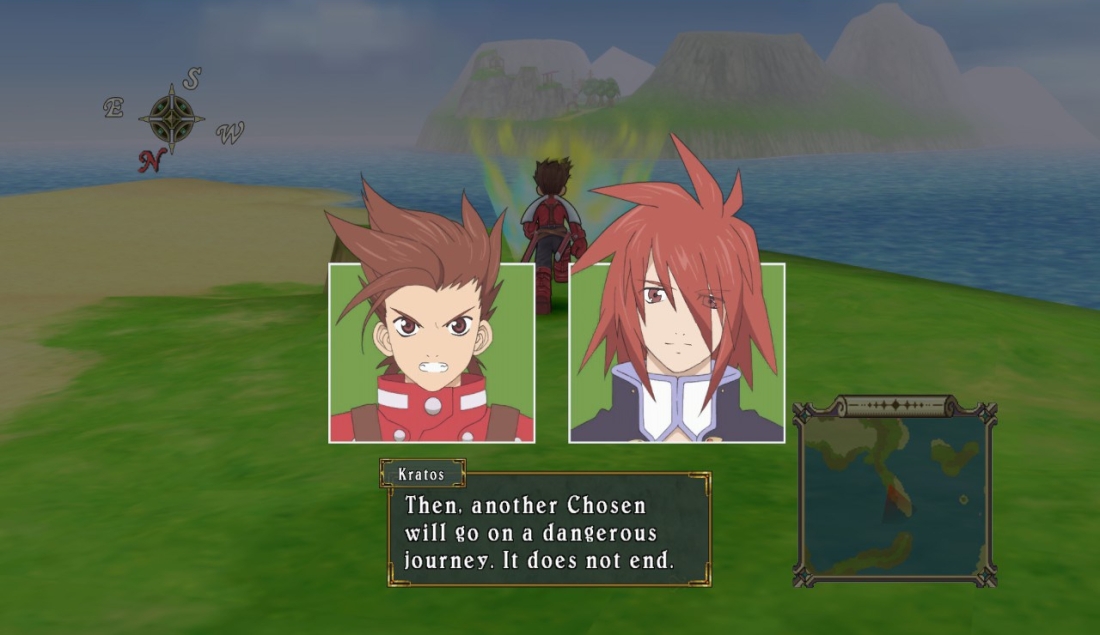
These conversations, or “skits” as I believe they’re referred to, serve to build a bond between the characters and the player, by demonstrating the forging of relationships between the characters themselves. Their individual personalities manifest in how they interact with each other; how they express their beliefs, weaknesses, humour, and affection (or disdain) for each other, for example. Over a long period of time, and many skits, you feel as though you know each individual intimately.
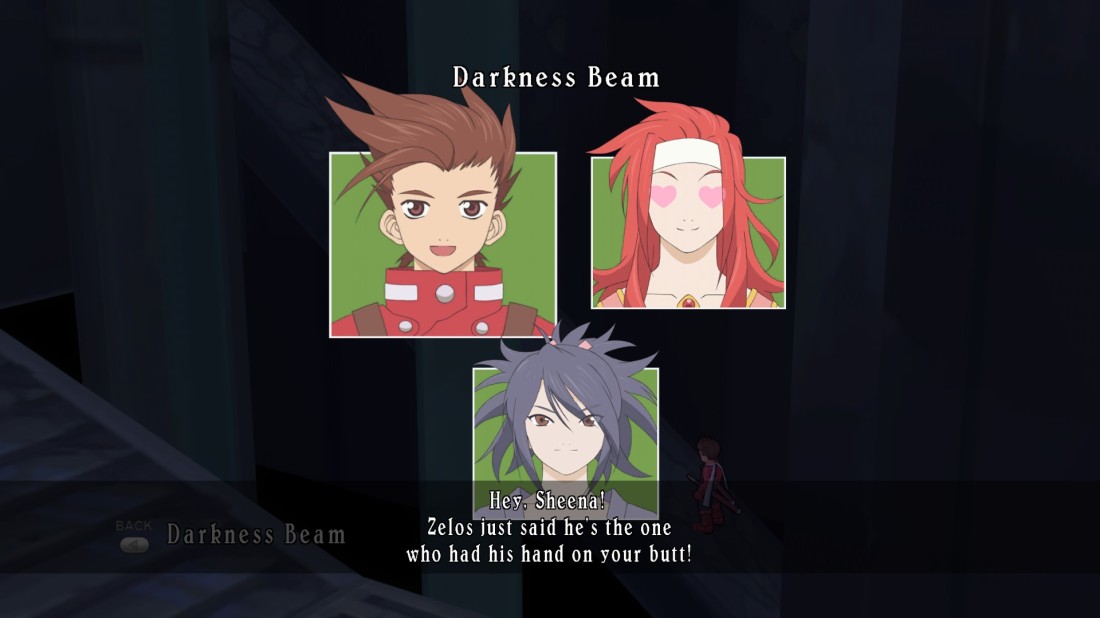
The way Tales of Symphonia unravels is similar to an animé, in my opinion. Aside from the obvious art style, the structure of the narrative uses a lot of the same devices.
It starts off small; you have a a small handful of seemingly stereotypical characters that you are introduced to (the brave but not-very-smart Lloyd, the clever but naïve Genis, the sweet but klutzy Colette). It then builds on this quickly, introducing you to more characters and advanced concepts, and the fact that one of them, being the Chosen One, must go on a perilous journey to save the world from destruction! So, standard animé really.
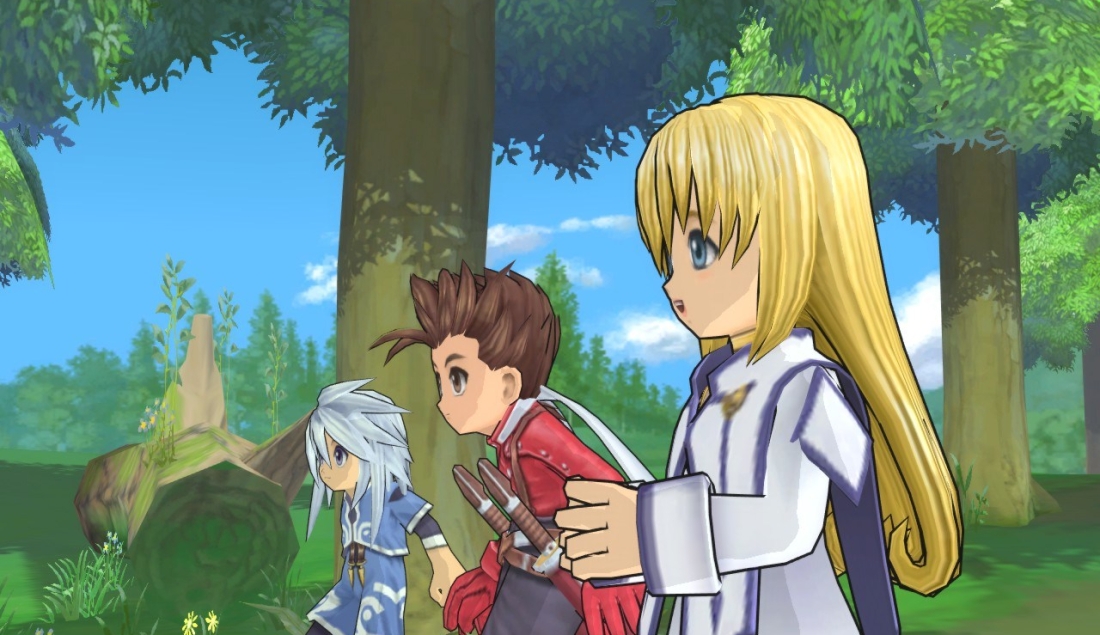
Each segment of the game is split into “tales”, each being very digestible fragments of story that build up over a long time into a cohesive whole; much like episodes of a series that eventually conclude in a finale. Some of them relate more directly to the overall arc that the story is building, and some serve more as “filler”, to allow you to obtain valuable items, learn more about the world, or get to know the characters more deeply.
At least for me, I have found the journey to be more important than the outcome in Symphonia. The interaction between the characters, and how they learn about the world along the way is very reminiscent of the slice of life genre common amongst manga and animé, which are very much about experiencing the journey along the way as opposed to the ultimate conclusion of the story threads.
Symphonia isn’t slice of life specifically, as it does have an overall story arc and keeps actively building towards it, but it does appear to employ storytelling techniques from the genre—especially during the more “filler”-type tales— in order to engage us as the audience with the world and characters in such a way that we become very attached. This aids greatly in investing the player emotionally during the trials and tribulations presented during the more “main story arc”-type tales.
Naturally, I became very nostalgic for animé series whilst playing Tales of Symphonia. I hadn’t watched any series for quite a few years, and then all of a sudden I broke and watched Cowboy Bebop. Then the floodgates were opened and I started watching Gin no Saji (Silver Spoon). Both of these are pretty slice of life-y, and have definitely helped to scratch the animé itch!
As to whether I’ll stop with these, though, is a Tale yet to be told.
Note: Between starting and finishing writing this I managed to complete Tales of Symphonia, and I need to say that it was a very satifying, fuzzly ending which I’d highly recommend if you’ve managed not to play it so far. It is a long game, but definitely worth it, even just for the journey along the way. Oh, and also entirely my personal opinion, but I completely and totally preferred to switch the voices over to Japanese in this instance.
